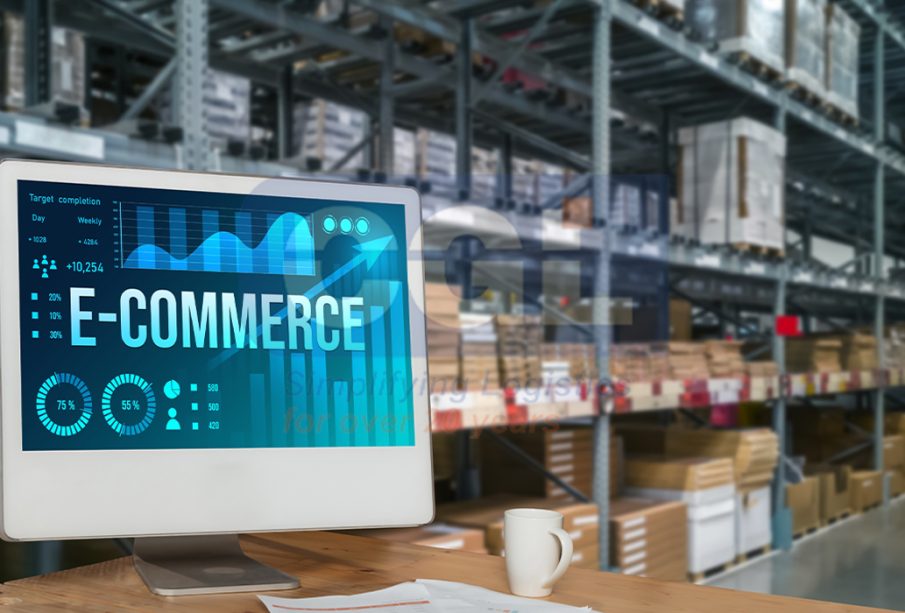Best Practices for E-commerce Logistics in 2025

The rapid growth of the e-commerce industry has forever changed the landscape of retail. With consumers increasingly seeking convenience, speed, and flexibility in their shopping experiences, logistics has become a pivotal element in shaping the success of e-commerce businesses. In 2025, logistics is no longer just about delivering products on time. It encompasses a range of factors—from warehouse management to order fulfillment, inventory control, and last-mile delivery—all of which contribute to a seamless customer experience.
As e-commerce continues to expand, businesses must adopt innovative and efficient logistics practices to stay competitive. In this article, we’ll explore the best logistics practices for 2025 that can help e-commerce businesses scale effectively, meet customer expectations, and maximize profitability.
1. Embrace Automation and AI in Warehousing
One of the most important logistics practices for 2025 is the integration of automation and artificial intelligence (AI) within warehouse operations. As e-commerce demand skyrockets, managing inventory efficiently becomes increasingly critical. Warehouse automation can significantly reduce human error, speed up order fulfillment, and optimize storage space—all of which are vital to improving operational efficiency.
For example, companies like Amazon have already pioneered the use of robots in their warehouses to transport items quickly and accurately, drastically reducing the time it takes to pick, pack, and ship orders. As a result, businesses that incorporate automation technologies into their warehouses can streamline their operations, reduce labor costs, and scale more easily as demand increases.
Additionally, AI-powered systems are able to predict inventory levels based on customer buying patterns, allowing businesses to better forecast demand and prevent stockouts or overstocking. This proactive approach to inventory management is key to ensuring that products are always available when customers need them.
2. Focus on Fast and Flexible Last-Mile Delivery
The last-mile delivery—the final step in getting a product from the warehouse to the customer—is a critical component of e-commerce logistics that has gained increasing importance in 2025. As consumer expectations for fast and flexible delivery options grow, businesses must adapt by offering quicker, more efficient delivery solutions.
One of the most notable trends in last-mile delivery is the rise of same-day delivery and two-hour delivery windows. With services like Amazon Prime’s two-day shipping setting the bar, e-commerce companies are now exploring ways to reduce delivery times even further. To achieve this, many are turning to local fulfillment centers or leveraging third-party logistics providers that specialize in rapid deliveries.
In addition to speed, flexibility is paramount. Consumers want to choose how and when they receive their orders. Offering a range of delivery options—including evening or weekend deliveries, as well as the ability to track packages in real-time—can enhance the customer experience and build brand loyalty.
To meet these demands, many companies are experimenting with crowdsourced delivery services and even considering drones or autonomous vehicles to deliver packages more efficiently and cost-effectively. In 2025, businesses that master the art of flexible and fast last-mile delivery will be ahead of the curve.
3. Prioritize Sustainable and Eco-Friendly Practices
Sustainability has become a central concern for consumers, and businesses that fail to address this demand may find themselves left behind. In 2025, e-commerce companies are expected to prioritize environmentally friendly logistics practices to minimize their carbon footprint and appeal to eco-conscious customers.
There are several ways businesses can integrate sustainability into their logistics operations. Eco-friendly packaging is one area where e-commerce companies can make a significant impact. Consumers are increasingly rejecting excessive plastic packaging in favor of sustainable alternatives, such as recycled cardboard or biodegradable materials. By making a commitment to using environmentally responsible packaging, e-commerce businesses can reduce waste and improve their brand’s reputation.
Moreover, optimizing delivery routes to reduce fuel consumption is another important step in achieving greener logistics. Route optimization software can help logistics companies determine the most efficient paths for drivers, cutting down on fuel consumption and emissions.
E-commerce companies can also consider partnering with green delivery services, such as those using electric vehicles or bicycles for urban deliveries. Offering customers the option of carbon-neutral shipping can further reinforce a brand’s commitment to sustainability and attract environmentally conscious buyers.
4. Implement Omnichannel Fulfillment
As e-commerce businesses strive to meet customer expectations, one of the most effective strategies is adopting omnichannel fulfillment. This approach allows companies to fulfill orders from various channels—whether online, in-store, or through mobile apps—while maintaining a seamless customer experience.
In 2025, customers expect a seamless transition between digital and physical stores, and they demand flexibility when it comes to how and where they receive their products. Omnichannel fulfillment enables businesses to offer buy online, pick up in-store (BOPIS) options, or the ability to return online purchases at brick-and-mortar locations. This approach not only enhances the customer experience but also reduces the burden on warehouses and streamlines inventory management.
Omnichannel fulfillment also enables companies to leverage the existing infrastructure of physical stores to act as mini-warehouses. This reduces the need for centralized warehouses, cuts down on delivery times, and minimizes shipping costs—ultimately improving efficiency and scalability.
5. Leverage Data Analytics for Smarter Logistics
Data analytics plays a vital role in improving logistics efficiency, and businesses that harness the power of data are more likely to succeed in 2025. By analyzing vast amounts of data from various touchpoints in the logistics process, companies can uncover valuable insights that lead to better decision-making and improved customer satisfaction.
For example, predictive analytics can be used to forecast demand patterns and optimize inventory levels. With access to real-time data, e-commerce businesses can make informed decisions about inventory replenishment, ensuring that products are always available to meet customer demand without overstocking.
Furthermore, data can be leveraged to monitor and improve delivery performance. By tracking metrics like delivery time, customer satisfaction, and shipping costs, businesses can identify bottlenecks in the logistics process and implement corrective actions. For instance, if customers consistently report dissatisfaction with delivery times in certain regions, the company can explore new fulfillment centers or logistics partners to improve service.
6. Invest in Robust Return Management Systems
A seamless and efficient returns process is essential to building customer trust and satisfaction. In 2025, businesses must focus on developing a return management system that is both efficient for the company and convenient for the consumer.
The key to an effective return system is making the process as easy and straightforward as possible for customers. This can include offering free returns, providing prepaid return labels, and enabling customers to drop off returns at local stores or partnering locations. An easy return process increases customer confidence and encourages repeat purchases.
On the logistical side, businesses must streamline the reverse logistics process to minimize the impact of returns on their bottom line. This involves having efficient systems in place to inspect, restock, or process returned items quickly and cost-effectively. Technology can assist with this by providing real-time data on returns, so businesses can track trends and make adjustments to their product offerings accordingly.
7. Integrate Technology for Real-Time Tracking
In 2025, consumers expect more than just fast delivery—they want to know exactly where their package is at all times. Real-time tracking is a crucial aspect of logistics that businesses must prioritize to meet modern customer demands. Offering detailed, real-time tracking of shipments allows customers to monitor their orders from purchase to delivery, increasing transparency and trust.
Real-time tracking can be powered by GPS technology and integrated with delivery apps, providing customers with updates on their package’s location, estimated delivery time, and even the option to reschedule or reroute shipments if necessary. For businesses, offering real-time tracking is a way to minimize customer anxiety and reduce the volume of delivery-related inquiries.
Additionally, integrating AI-driven chatbots with tracking systems allows businesses to provide instant updates to customers, further enhancing the customer experience and reducing the workload of customer service teams.
Conclusion: The Future of E-Commerce Logistics
As the e-commerce industry continues to evolve in 2025, logistics will play a central role in shaping the success of online businesses. By embracing automation, focusing on fast and flexible delivery options, prioritizing sustainability, and leveraging data analytics, companies can ensure they stay ahead of the competition and meet the ever-growing demands of customers.
At the same time, integrating omnichannel fulfillment, improving return management systems, and providing real-time tracking are all key practices that will help businesses thrive in this rapidly changing environment. E-commerce logistics is no longer just about getting products to customers—it’s about creating an efficient, sustainable, and seamless experience that fosters customer loyalty and drives growth.
For businesses looking to scale in 2025 and beyond, adopting these best practices is essential to remaining competitive in the global e-commerce marketplace.









